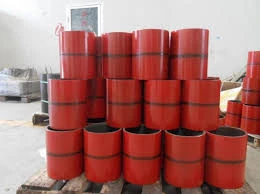- Afrikaans
- Albanian
- Amharic
- Arabic
- Armenian
- Azerbaijani
- Basque
- Belarusian
- Bengali
- Bosnian
- Bulgarian
- Catalan
- Cebuano
- Corsican
- Croatian
- Czech
- Danish
- Dutch
- English
- Esperanto
- Estonian
- Finnish
- French
- Frisian
- Galician
- Georgian
- German
- Greek
- Gujarati
- Haitian Creole
- hausa
- hawaiian
- Hebrew
- Hindi
- Miao
- Hungarian
- Icelandic
- igbo
- Indonesian
- irish
- Italian
- Japanese
- Javanese
- Kannada
- kazakh
- Khmer
- Rwandese
- Korean
- Kurdish
- Kyrgyz
- Lao
- Latin
- Latvian
- Lithuanian
- Luxembourgish
- Macedonian
- Malgashi
- Malay
- Malayalam
- Maltese
- Maori
- Marathi
- Mongolian
- Myanmar
- Nepali
- Norwegian
- Norwegian
- Occitan
- Pashto
- Persian
- Polish
- Portuguese
- Punjabi
- Romanian
- Russian
- Samoan
- Scottish Gaelic
- Serbian
- Sesotho
- Shona
- Sindhi
- Sinhala
- Slovak
- Slovenian
- Somali
- Spanish
- Sundanese
- Swahili
- Swedish
- Tagalog
- Tajik
- Tamil
- Tatar
- Telugu
- Thai
- Turkish
- Turkmen
- Ukrainian
- Urdu
- Uighur
- Uzbek
- Vietnamese
- Welsh
- Bantu
- Yiddish
- Yoruba
- Zulu
Understanding Casing Pup Joints in Oil and Gas Well Operations
Casing Pup Joints An Overview
Casing pup joints are essential components in the oil and gas industry, specifically in the drilling and completion of wells. These specialized pipe sections play a crucial role in enhancing the efficiency and safety of drilling operations. In this article, we delve into the definition, uses, and significance of casing pup joints.
Definition and Composition
Casing pup joints are short lengths of pipe, typically ranging from 3 to 10 feet, that connect larger sections of casing together. Manufactured from high-grade steel, they are designed to withstand the extreme pressures and temperatures encountered during drilling operations. Depending on the application, they may come in various diameters and wall thicknesses, ensuring compatibility with different casing sizes and requirements.
Functions and Applications
The primary function of casing pup joints is to provide flexibility in the drilling process. They can accommodate changes in well trajectory and depth, ensuring that the casing remains stable and secure. When drilling a well, operators often encounter unexpected geological formations. Casing pup joints allow for quick adjustments to the casing string, minimizing disruptions and reducing the risk of potential failures.
In addition to flexibility, casing pup joints serve several other important functions
1. Pressure Management They help manage the pressure within the wellbore, preventing blowouts or casing failure. By connecting the casing strings, pup joints assist in maintaining the integrity of the well during drilling and completion phases.
casing pup joint

2. Well Control Casing pup joints play a vital role in well control operations. In the event of an influx of formation fluids, the ability to swiftly adjust the casing setup can mitigate risks and enhance safety.
3. Facilitating Cementing Operations During the cementing phase, pup joints aid in the correct placement of cement around the casing, ensuring a proper seal is formed. This is critical for isolating different formations and preventing fluid migration.
4. Ease of Handling and Installation Given their shorter length, pup joints are easier to handle and install compared to full-length casing sections. This expedites the overall drilling process and reduces labor costs.
Significance in Drilling Operations
The significance of casing pup joints cannot be overstated. They are crucial for the structural integrity of the wellbore and the overall success of drilling operations. By enabling operators to make necessary adjustments in real time, pup joints contribute to the efficiency of drilling programs and can save companies significant time and resources.
An additional aspect of their importance is their impact on safety. Drilling is inherently risky, and the wellbore is exposed to a range of pressures and conditions. By incorporating casing pup joints into the drilling design, operators enhance the safety protocols in place, reducing the likelihood of catastrophic failures. This not only protects personnel and equipment but also minimizes environmental risks.
Conclusion
In conclusion, casing pup joints are an integral part of the oil and gas drilling process, providing the necessary flexibility, safety, and efficiency. Their role in managing pressure, facilitating well control, and enhancing cementing operations underscores their importance in the industry. As drilling technology continues to evolve, the design and application of casing pup joints will likely become even more advanced, further optimizing drilling performance. For operators in the field, understanding and utilizing these components effectively can lead to more successful and safer drilling endeavors.
-
Tubing Pup Joints: Essential Components for Oil and Gas OperationsNewsJul.10,2025
-
Pup Joints: Essential Components for Reliable Drilling OperationsNewsJul.10,2025
-
Pipe Couplings: Connecting Your World EfficientlyNewsJul.10,2025
-
Mastering Oilfield Operations with Quality Tubing and CasingNewsJul.10,2025
-
High-Quality Casing Couplings for Every NeedNewsJul.10,2025
-
Boost Your Drilling Efficiency with Premium Crossover Tools & Seating NipplesNewsJul.10,2025







